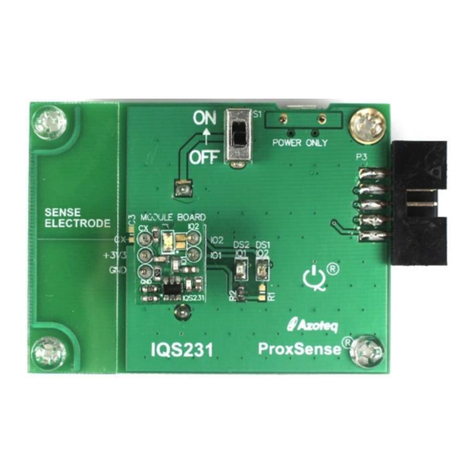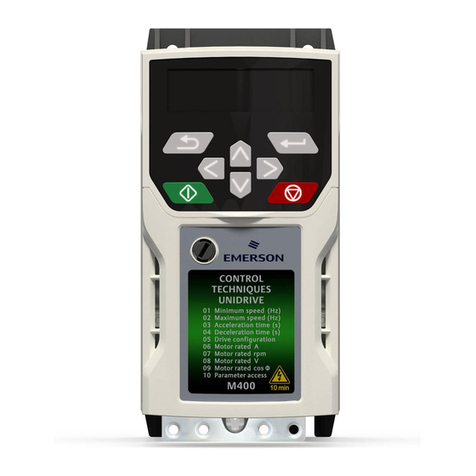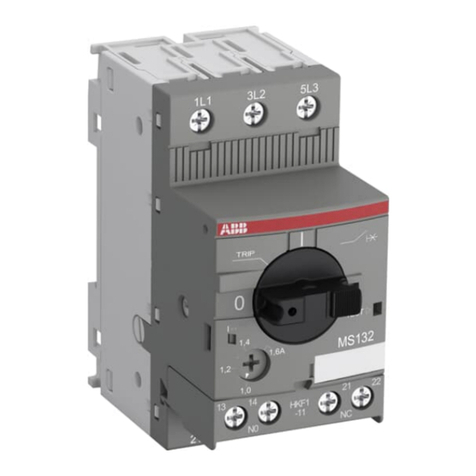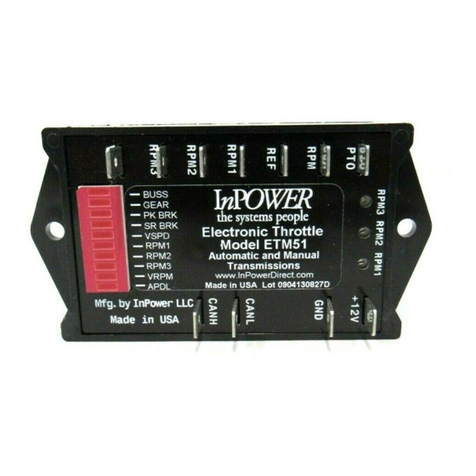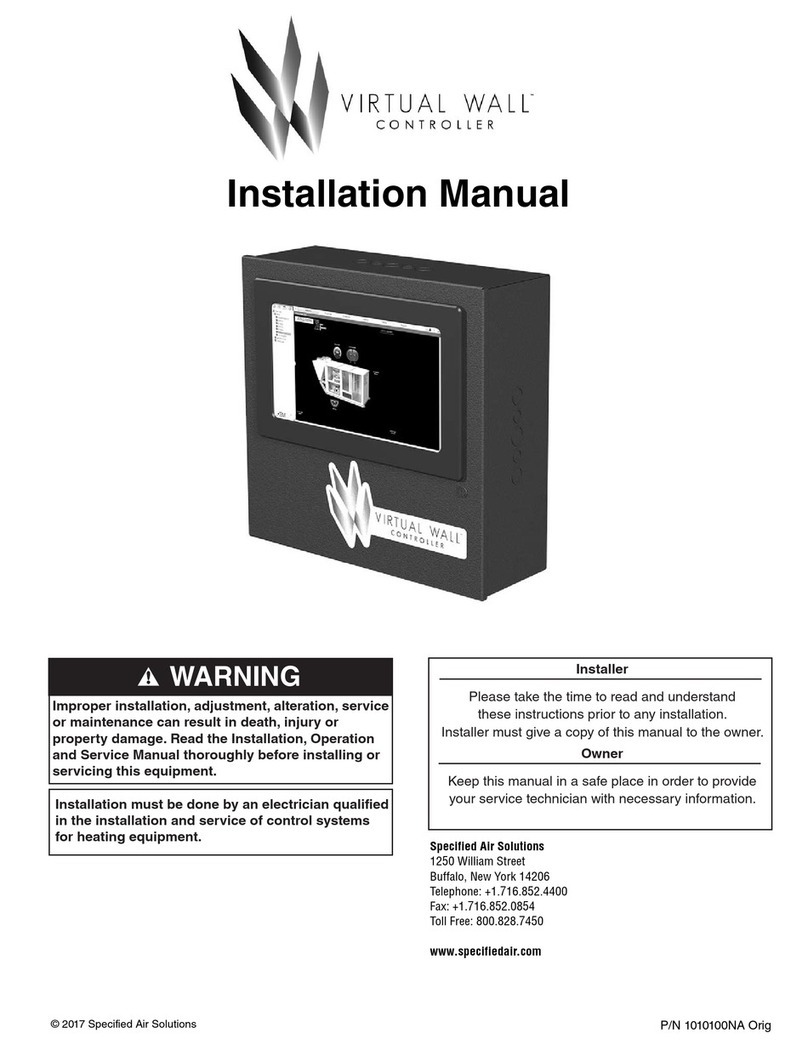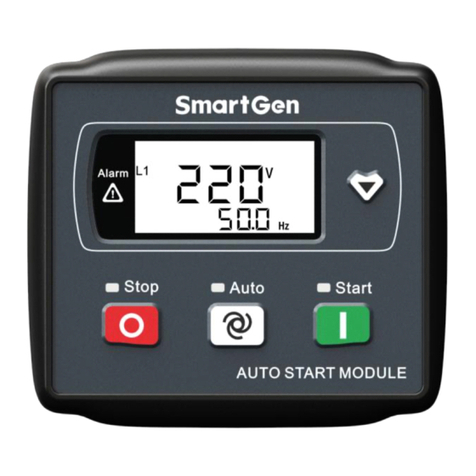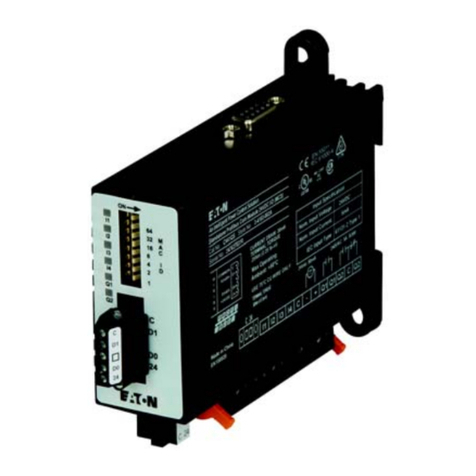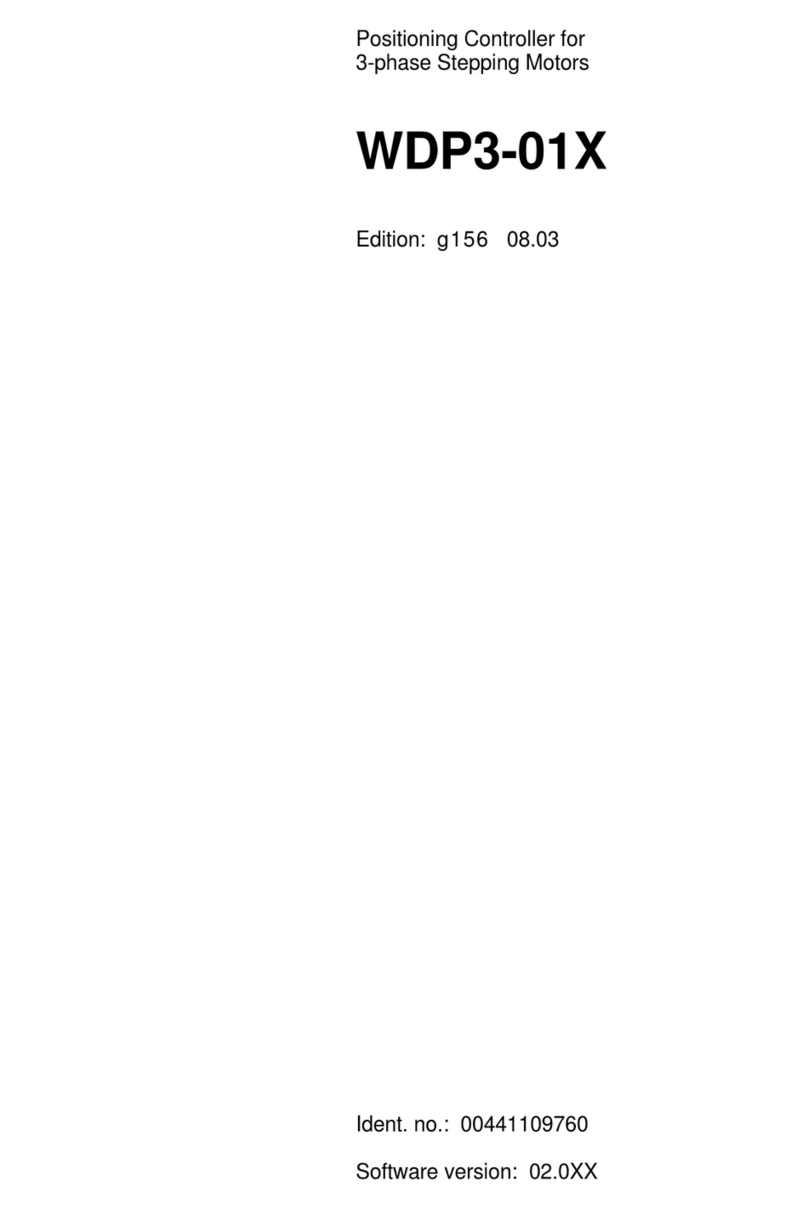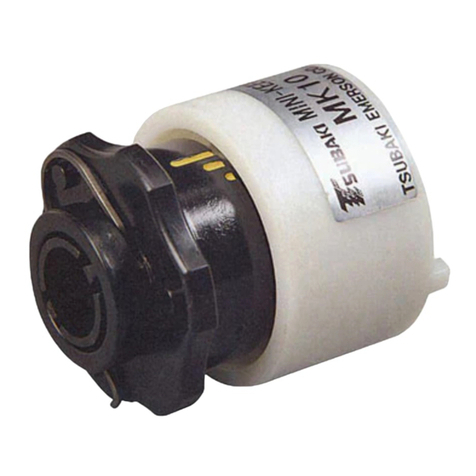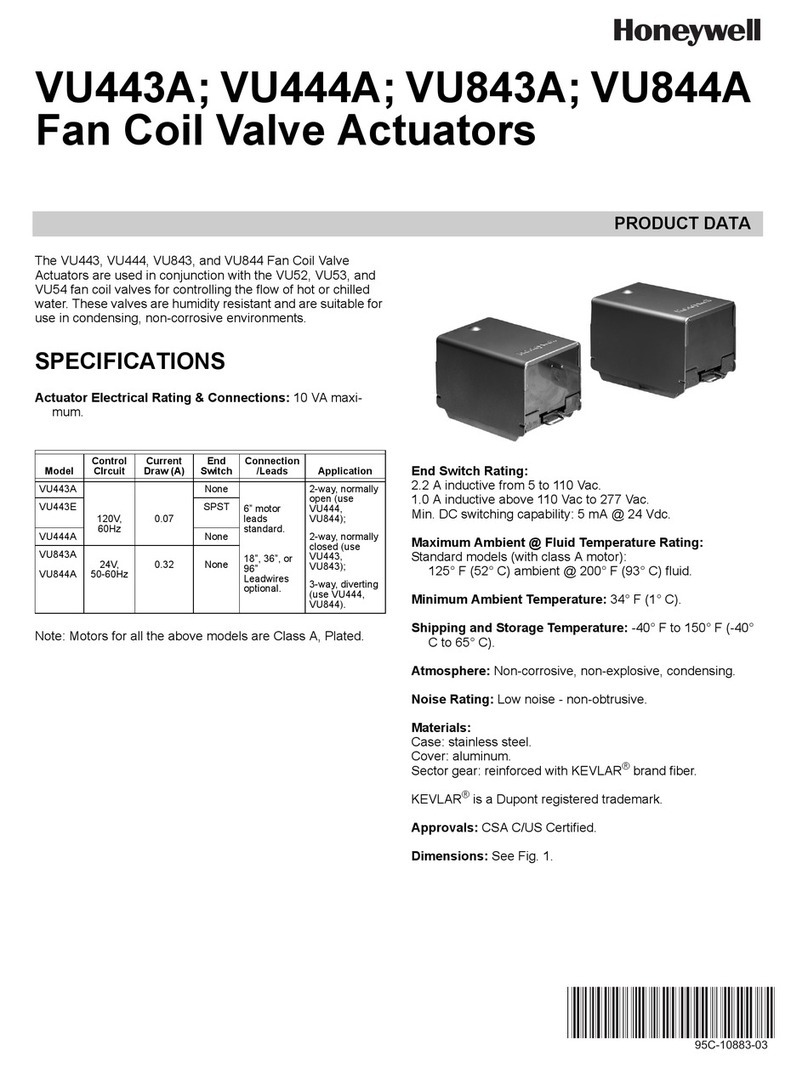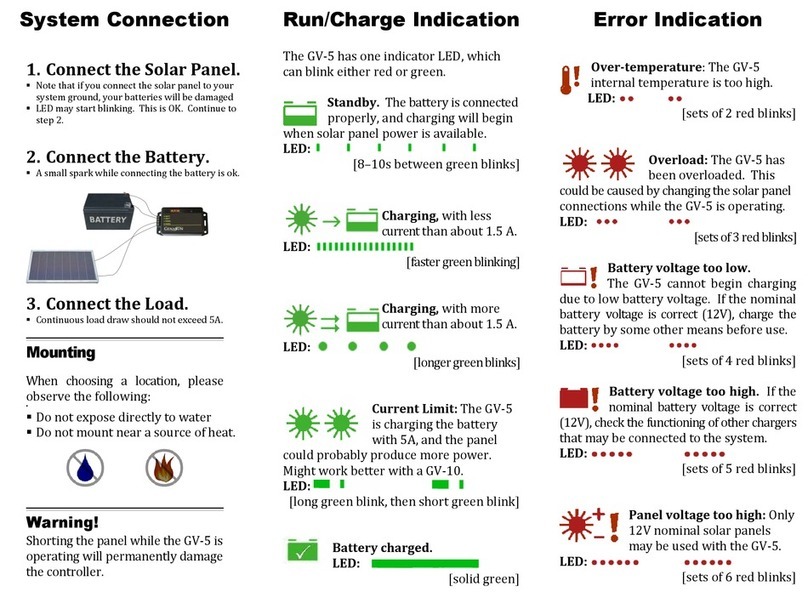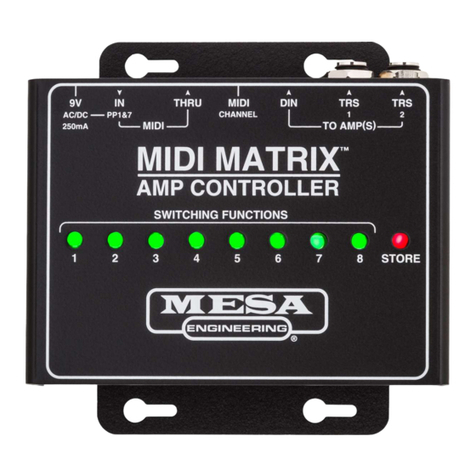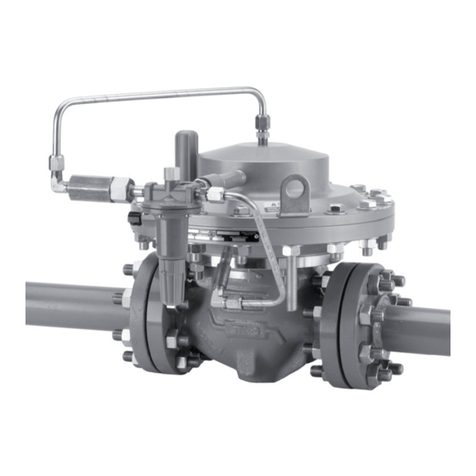Tilia Termoventiler ThermOmatic ERA 10 Guide

Termoventiler AB 1
ThermOmatic ERA 10
Installation and user instructions ver 1.9
Terms and conditions of guarantee that these instructions
PLEASE READ CAREFULLY BEFORE INSTALLATION!
The equipment consists of
1. ThermOmatic ERA 10 Control Center/Motor
(abbreviated here to ERA)
2. Assembly kit, for ESBE 3MG and TERMOMIX
3. ThermOmatic RS, room sensor –
4. Flow sensor
5. Network adapter, 230–24V AC
6. Room sensor cable, 25 m two core
7. Sensor clamp and insulation for flow sensor.
8. Screwdriver for cable plinth.
How ERA works
ERA is designed to maintain the temperature set on
the room sensor. If the room temperature deviates
from that set, ERA opens or closes the mixing valve
such that the flow temperature delivers the desired
temperature. ERA frequently measures the room
temperature in order to be able to quickly reduce the
flow temperature if the room temperature rises due to
supplementary heating, (e.g. sunlight). If the room
temperature is falling the flow temperature is raised
with an extended time delay.
This is beneficial when airing, so-called airing lock.
The network light (green) is on permanently when
the regulator is operating normally and blinks on
sensor fault. The red light comes on when the motor
opens the valve and the yellow light comes on when
the motor closes the valve.
If the max setting dial is turned to the end point at
start up, the red+yellow light will blink for five
seconds. The direction of movement can be set
during this time.
When the motor reaches an end point, the red or
yellow light will blink.
The red light blinks when there is no more heat in
the boiler/storage tank.
The yellow light blinks when the flow temperature is
too high.
The flow temperature can be set at a maximum
setting of 20–80°C using the small dial.
For easier installation and fault tracing ERA
immediately goes into start up position for 30 minu-
tes every time the power is connected.
In the event of a fault (short circuit or power loss) in
one or both sensors or the cable to them, ERA always
goes to closed position and then opens for 20 seconds,
which is the equivalent of opening the mixing valve to
position 1 on the ESBE’s mixing valves. This is to
ensure that the premises get sufficient heat, to protect
the heating system against frost.
In the event of a fault in the room sensor, the network
light blinks every four seconds.
In the event of a fault in the flow sensor the network
light blinks every other second.
In the event of a fault in both the flow and room
sensors, the network light will blink rapidly for three
seconds followed by a longer blink.
1
3
5
8
2
64
7
Termoventiler AB
Sweden
ERA10_Manual_E.PMD 821402 -E 060322
www.termoventiler.se

Termoventiler AB
2
0
1 0
5
R e t u r n
H o t
w a t e r
B o i l e r
R a d i a t o r
M i x i n g v a l v e
F l o w s e n s o r
F l o w p i p e
1. Installation of bypass valve
2. Connection of cables
3. Mounting of mixing valve motor to mixing valve
4. Installation/checking of direction of movement
5. Installation of flow sensor
6. Placement of room sensor
1. Installation of bypass valve
The bypass valve can be mounted in 4 different ways
(see below). Mount the number plate so that it
corresponds with the mounting in question (see
below). Set bypass valve to position 5 (mid dial, see
AAnticlockwise closing
This modification
applies to ESBE 3MG
For other makes, see
user instructions for
respective valve.
Order of installation and contents
7. Mounting of room sensor
8. Commissioning
9. Radiator thermostats
10. Adjustment of room sensor
11. Max setting
12. Manual adjustment
DClockwise closing
CAnticlockwise closing
BClockwise closing
1. Installation of bypass valve
3. Mounting of mixing valve motor to mixing valve
2. Connection of cables
4. Installation/checking of direction of movement
5. Installation of flow sensor
6. Placement of room sensor
Alternative order of installation (e.g. if mixing valve is readily accessible)
7. Mounting of room sensor
8. Commissioning
9. Radiator thermostats
10. Adjustment of room sensor
11. Max setting
12. Manual adjustment
illustration below) and remove dial/handle without
moving the spindle position. Note which direction
the mixing valve spindle is to rotate to close
(clockwise or anticlockwise).
1 0
0
5
R e t u r n
F l o w p i p e
H o t w a t e r
B o i l e r
R a d i a t o r M i x i n g v a l v e
F l o w s e n s o r
1 0
05
R e t u r n
H o t w a t e r
B o i l e r
R a d i a t o r
M i x i n g v a l v e
F l o w s e n s o r
F l o w p i p e
0
1 0 5
R e t u r n
F l o w p i p e
H o t
w a t e r
B o i l e r
R a d i a t o r M i x i n g v a l v e
F l o w s e n s o r

Termoventiler AB 3
The motor is midway between closed and open on
delivery (Picture 1).
a) Depress and turn dial approx. 1/8 turn towards stop.
The dial will then remain in depressed position when
cover is removed.
b) Remove cover by unscrewing screws with crosshead
screwdriver. DO NOT turn dial until cover is
screwed back into place (Picture 1)
c) Connect cables:
The ends of the cables should be stripped to max 4
mm (See sketch).
Connect power cable to plinth as shown in
picture 2.
Connect flow sensor to plinth.
Connect cable to room sensor to plinth. DO
NOT connect the room sensor itself.
2. Connection of cables. NOTE This can be easier to do before mounting the ERA on mixing valve.
Cable ends
4 mm
Picture 4Picture 3
Push in firmly
and hold cables
firmly in cable
outlet till cover
catch secures
them
Picture 5
Unscrew screws Picture 1
Indicator arrow
Picture 2
Plinth for connecting cables
24V
Flow sensor
Room sensor
d) Press in carefully and hold cables in position in
cable outlet such that the locking catch on the
casing can secure them in position
(Pictures 3 and 4).
e) Mount casing onto motor. Tighten screws.
(Picture 5)
f) Turn back dial so it pops out into operating posi-
tion.

Termoventiler AB
4
The direction of movement of the mixing valve motor
is set using the dial for max setting as follows.
See 1. Installation of bypass valve on previous page to
determine in which direction the mixing valve should
close.
If the power is connected when the max dial is at an
end point, the red+yellow light will blink for 5
seconds at the same time. The direction of movement
can be set during this time.
Alt 1: If the mixing valve closes clockwise (B, D);
set max limit dial at 20° (Pic 2).
Switch on power. To adjust clockwise closing, you
only need to turn the dial clockwise to 80° within 5
secs.
Alt 2: If the mixing valve closes the motor
anticlockwise (A, C); set max limit dial to 80° (Pic 3).
Switch on power. To adjust anticlockwise closing, you
only need to turn the dial clockwise to 20° within 5
secs
The direction of movement setting stays the same after
a power loss.
3. Mounting mixing valve motor on
mixing valve
Mount motor on bypass valve as follows:
a) Mount motor mounting on lower right mounting (2
on picture below).
b) Press spindle sleeve (1 in picture) on mixing valve
spindle so spindle reaches bottom of hole. Check that
the arrow points to 5 on bypass valve gauge.
c) Check that dial is in operating position. Dial has
two positions;
1. Manual position = Dial pushed out and can be
turned.
2 Operating postion = Dial is at furthest point
(locked towards motor) and cannot be turned.
d) Guide motor onto spindle sleeve and push it firmly
into position. Fix motor with screws (3 on picture)
in centre of dial.
a) Switch on power. NOTE The room sensor should
not be connected.
b) Check that motor goes to closed position and then
opens in 20 seconds.
c) If motor does not go to closed position –
disconnect power and follow instructions to
change direction of movement. Test again .
d) Mount the blue-red scale (4 on picture above)
such that the blue field points towards the red
arrow on motor. Push top firmly into position (5
on pic).
e) Disconnect power by removing network adapter.
Picture 2 Picture 3
4. Installation/checking of direction of movement

Termoventiler AB 5
5. Installation of flow sensor
Mount sensor on flow pipe, as close to mixing valve
as possible. Coat with heat conducting paste and
clamp the flat part of sensor to the pipe with the
enclosed clamp (See picture right).
Finally cover pipe and sensor with enclosed
insulation. Good contact with the pipe is very
important for operation.
6. Positioning of room sensor
The room sensor should be located centrally in the
house, in a hall, stairway or similar space which is
linked to as much of the rest of the house as possible.
Avoid rooms with a lot of supplementary heat, such as
a kitchen, south facing living room or upstairs in a
two storey house. Position the sensor away from direct
sunlight.
Avoid placing on an external wall or near an external
door.
Make sure the sensor is not positioned closer than
1 m from the nearest radiator and at least 1.5 m from
the floor.
Connect the sensor to the marked plinth on the
circuitboard.
7. Installation of room sensor
The room sensor comprises a base and a casing with
dial.
The casing is attached to the base with a snap fixing.
(NOTE The dial does not need to be removed or
loosened during installation.)
Adjust the dial such that the point for the lowest
setting is in line with the indicator line on the casing
before the sensor is taken apart for mounting. Mount
the base to the wall. Connect the cable to the plinth.
Please note that the cables can be stripped more than
4 mm here. Push the casing on firmly such that the
indicator points to the left heel on the base. The
position on the dial for the lowest setting should be
pointing towards the indicator.
8. Commissioning
When the room sensor is connected, the network
light will illuminate continuously. ERA is now ready
for use. Set the room sensor to the desired tempera-
ture.
9. Radiator thermostats
The thermostat part should be removed from any
thermostat valves in the same room as the indoor
sensor.
In other rooms it is an advantage to have thermostat
valves that can shut off the radiator if the room gets
too hot due to supplementary heat.
10. Adjusting the room sensor
If you discover after a few days operation that the
room sensor gauge does not correspond with an
independent thermometer, the room sensor can be
adjusted.
1. Hold the dial firmly in the current position.
2. Unscrew the dial locking screw a couple of turns.
3. Push the screw in with the screwdriver.
4. Turn dial to ”correct position”.
5. Push dial inwards and hold it firmly in position.
6. Pull out the screw.
If the adjustment does not work, the factory setting
can be restored by turning the dial clockwise to the
stop point and then repeating steps 1–3. The dial will
then be set to slightly under 10°C. Now repeat steps
5 and 6.
11. Settings
Maximal flow pipe temperature can be set between
20–80°C.
A good setting should provide sufficient heating in
the house in the coldest weather, while preventing
unnecessary heat rises during vigorous airing or other
abnormal drops in temperature.
When used with underfloor heating, the highest flow
pipe temperature must be restricted to the lower of
the two following values: the highest temperature the
flooring can withstand, or the temperature that
provides optimum comfort.
12. Manual setting
Push in the large dial so the mixing valve is
disconnected from the motor. Turn dial to desired
position. If the dial is to be in the desired position for
an extended period, the power must be disconnected.
H e a t
conducting
p a s t e
S e n s o r I n s u l a t i o n
C a b l e c l i p
i p e
Picture 4 Picture 5

Termoventiler AB
6
PLEASE NOTE
House slow to heat up
It can take several hours to reach the temperature set
on the room sensor dial.
Balancing radiator system
In older houses especially, the radiator system may
not be balanced. To further optimise the heating
system, it is worth balancing the system to get the
right water flow through each radiator relative to the
heat output of all radiators. Small radiators should
have less flow than the larger ones. This makes for
better heat distribution through the house. The larger
the house and pipe network, the more benefit
balancing will provide.
In certain cases the heating system can be short
circuited and more or less cease to operate.
If the radiator in the room where the room sensor is,
is too big compared with the other radiators in the
house, some of the other rooms can be too cold. This
can be rectified by modifying the output of this
radiator with a manual dial or with the pressure
reduction device in the return valve.
Balancing is particularly important in sites with a
storage tank or heating pump. Balancing makes the
return temperature as low as possible, which increases
the storage capacity of the tank and the effectiveness
of the pump .
Fault tracing
For ease of installation and fault tracing, ERA
immediately goes into start up mode for 30 minutes
every time the power is connected.
If the max setting dial is at an end point at start up,
the red+yellow light will blink for 5 seconds. The
direction of movement can be set during this time.
If there is a fault (short circuit or power loss) in either
or both sensor and cable to it, ERA will always go to
closed position and then open again for 20 seconds,
which corresponds to the mixing valve opening to
position 1 on the ESBE mixing valves.
This is designed to deliver sufficient heat to protect
the heating system against frost.
If there is a fault with the room sensor, the green light
will blink every 4 seconds.
If there is a fault in the flow pipe sensor the green
light will blink every other second.
If there is a fault in both the flow and room sensor the
green light will blink rapidly for 3 seconds followed
by a longer blink.
PLEASE NOTE when the RED or YELLOW
light is blinking, this indicates that the mixing
valve is fully open or closed not that there is a
fault.

Termoventiler AB 7
Fault
Motor is in open or closed
end position but the mixing
valve spindle is not turning.
Dial for mixing valve is in
depressed position.
Turn the large dial until the dial pops out to
operating position.
Motor makes a noise in end
position.
See above See above
Network light blinks
every two seconds.
Fault in flowpipe sensor or
wiring to it.
Check that wiring is not damaged or poor
contact at connection.
Measure the resistance at the free end of
Thermomatic ERA. It should be 48 kOhm at
20°C room temperature when room sensor dial is
at 5°C and 38 kOhm when sensor dial is set at
15°C.
Network light
blinks every four
seconds.
Fault in room sensor, wiring
or the connection.
Check wiring is not broken and connected
correctly.
Measure resistance with separate sensor.
At +25°C it should be 50 kOhm and at 50°C it
should be 20 kOhm.
Mixing valve gives out heat
even though Thermomatic
ERA is in fully closed
position.
Motor closed position and
mixing valve 0 position
not synchronised.
Remove motor from mixing valve. Set mixing
valve to 0. Re-attach motor fully closed.
Motor will only open or
close.
Wrong direction of
movement.
Change motor’s direction of movement.
See page 4 for instructions.
Motor is not opening far
enough even though
house is not warm.
Max setting set too low. Increase max setting.
Mixing valve does not
open even though house
is cold.
Flow pipe sensor mounted
on hot water pipe.
Move sensor to flow pipe.
Motor shunts between
open and closed.
Sensor is located too far from
bypass valve or contact with
pipe is poor.
Move sensor closer to bypass valve. Tighten
sensor so contact is better.
Network light blinks
rapidly 3 times followed
by a longer blink
Fault in both flow and room
sensors.
Fault trace as per two points above.
ActionProbable Cause
Mixing valve is closing flow
port instead of hot water
port.
Position the mixing valve spindle such that
it closes the hot water port when motor is
in closed position.
The house does not get
warm.

Termoventiler AB
8
Table of contents
